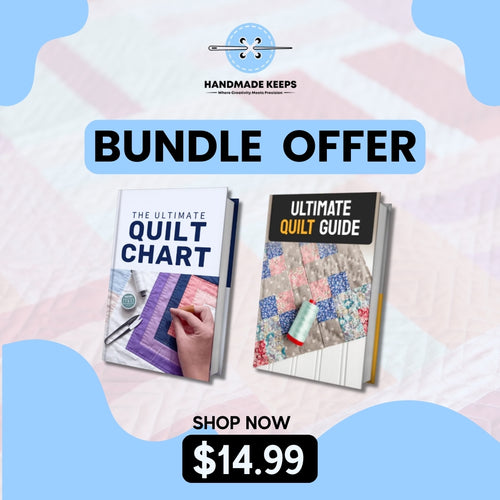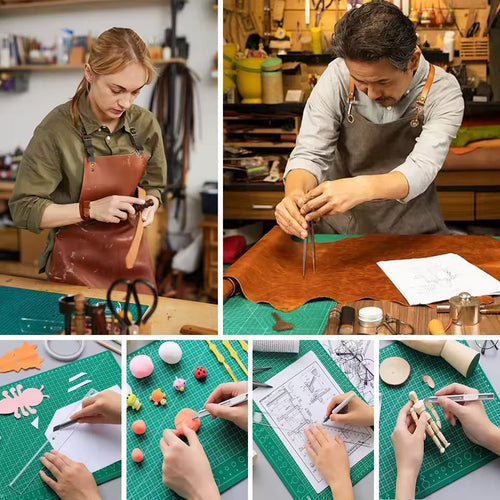3D quilting is a fascinating technique that adds depth, texture, and dimension to traditional quilt patterns. Unlike flat quilts, 3D quilts use layers and various techniques to create a visually engaging design that stands out. This style has been growing in popularity, especially among quilters in the US, because it offers an opportunity to infuse creativity into each project.
Why choose 3D quilts? These quilts bring a level of richness and uniqueness that can transform simple patterns into extraordinary pieces. The added texture gives quilts a dynamic look, which makes them visually interesting from every angle. Whether you are a beginner or a seasoned quilter, 3D quilting offers endless possibilities for creative expression.
In this article, we will explore the essential techniques for creating 3D quilts, including folding, piecing, and applique. You will also discover how to combine these methods to produce stunning, multi-dimensional effects.
Understanding the Basics of 3D Quilting
A 3D quilt differs from a traditional quilt primarily due to its layers and texture. Instead of flat fabric, a 3D quilt uses strategically placed folds, pieces, and applique to create raised areas that form shapes and designs. The added depth creates a tactile and visually captivating experience.
Tools and Materials for 3D Quilting
To get started, you will need the right tools and materials. Essential supplies for 3D quilting include high-quality batting, fabrics in various textures, and specialized quilting tools. Materials like felt, velvet, and denim can be used to achieve richer textures. You will also need quilting templates, such as our 5 in 1 Quilt Cutting Template, to guide your project.
Choosing the Right Pattern
When selecting a pattern for your 3D quilt, look for one that lends itself to texture. Geometric designs, floral motifs, and abstract shapes are great options. These patterns provide a good structure to highlight the 3D effects created by folding, piecing, and applique.
The Importance of Fabric Selection
Fabric selection plays a crucial role in the creation of a 3D quilt. Lightweight fabrics like cotton work well for basic piecing, while heavier fabrics like velvet or felt will give your quilt more depth. For added texture, you can mix and match fabrics, using lighter ones for the background and heavier ones for the 3D elements.
Techniques for Creating 3D Quilts
Folding Techniques for 3D Quilts
Folding is one of the most popular techniques used in 3D quilting. The art of folding fabric can create raised textures, such as pleats, tucks, and pinch folds.
How to Fold Fabric for Texture
Start by folding the fabric into different shapes—pinches, pleats, or tucks—and sew them into place. Be sure to keep your folds uniform for a neat, consistent effect.
Different Types of Folds: Pinch, Pleats, Tucks
-
Pinch folds create small, raised areas in your quilt, perfect for adding subtle texture.
-
Pleats are folded sections of fabric that are stitched to create a uniform, structured appearance.
-
Tucks add depth and visual interest by folding the fabric over itself in a way that reveals different layers.
Tips for Consistency
To maintain consistency, fold the fabric with equal spacing and depth. Use quilting clips or pins to hold the folds in place as you sew.
Piecing Techniques for 3D Quilts
Piecing involves joining multiple fabric pieces together, often at angles, to create geometric shapes. This technique adds depth by allowing you to sew curved edges and create dimensional blocks.
Adding Depth with Piecing
Start by using contrasting fabric colors and different textures. Curves and angled piecing can give the quilt a sense of movement and depth, making the design appear more dynamic.
Creating Curves and Angles for Dimension
Use templates like the Ultimate Quilt Chart to guide your curved piecing. Carefully sew along the curves to create smooth, continuous lines that will enhance the 3D effect.
Applique Techniques for Adding Dimension
Applique is a technique where pieces of fabric are sewn onto a base fabric. It can add depth by layering different textures and colors.
How to Layer and Sew Applique Pieces
Layer applique pieces on top of the quilt background fabric, ensuring each layer is securely sewn. Experiment with different fabrics to create a contrast that enhances the 3D look.
Using Multiple Colors and Textures
For a striking 3D effect, use multiple colors and fabric textures in your applique. Combining these elements adds dimension and makes the design stand out.
Combining Multiple Techniques for Maximum Impact
Don’t be afraid to mix folding, piecing, and applique. Combining these techniques allows you to create complex, multi-dimensional quilts that are visually stunning and unique.
Choosing the Right Batting for 3D Quilts
Batting plays a crucial role in the final texture of your quilt. Choose a thicker batting for quilts that require more depth. For more subtle texture, use a thinner batting.
Advanced Tips and Tricks for 3D Quilting
Using Embellishments in 3D Quilts
Adding embellishments like beads, buttons, and sequins can enhance the texture of your quilt. These elements can be sewn onto specific areas to create focal points or to emphasize certain 3D features.
Incorporating Layers for Complex 3D Effects
Create multiple layers of fabric to enhance depth. By stacking different fabrics and folding them in various ways, you can create intricate 3D effects that stand out.
Working with Non-Traditional Fabrics
For an even more unique 3D quilt, try incorporating non-traditional fabrics like velvet or felt. These fabrics will add a luxurious texture and make your quilt stand out.
How to Make Your 3D Quilt Pop
To make the depth of your quilt pop, play with color contrast. Light fabrics on dark backgrounds can highlight the 3D effect, while textured stitching and quilting patterns can add visual interest.
Caring for 3D Quilts
How to Wash and Maintain 3D Quilts
Caring for your 3D quilt requires some special attention. Always wash your quilt in cold water and avoid using fabric softeners, as they can flatten the texture. Air dry or use a gentle tumble dry cycle to preserve the texture.
Storage Tips for 3D Quilts
Store your quilt in a cool, dry place, away from direct sunlight. Avoid folding the quilt in the same place repeatedly, as it could damage the 3D elements.
Repairing and Restoring 3D Quilts
If your 3D quilt gets damaged, carefully repair any folds, applique, or stitching that might have come loose. Keep the quilt clean and in good condition for years to come.
FAQs
What are the best fabrics for creating 3D quilts?
For 3D quilts, fabrics with more body like felt, velvet, and denim work well. Cotton is great for piecing and folds, while silk can add a unique texture to your quilt.
Can I create a 3D quilt with just basic quilting skills?
Yes, beginners can start with simple techniques like folding or applique. Start with easy projects and gradually add more complex techniques as you gain confidence.
How do I avoid my 3D quilt from becoming too bulky?
Choose lightweight fabrics for the background and thinner batting. This will help you create depth without overwhelming the quilt with too much bulk.
What are some beginner-friendly 3D quilting projects?
Start with small projects like 3D coasters or simple wall hangings. These projects are perfect for practicing basic 3D quilting techniques without overwhelming yourself.
Conclusion
Creating 3D quilts is a rewarding and enjoyable process that allows quilters to add dimension and depth to their creations. With the right techniques, tools, and materials, you can craft quilts that stand out and express your creativity. Explore the many possibilities of 3D quilting with products like the Ultimate Bundle of Quilting Guides to enhance your quilting journey.




